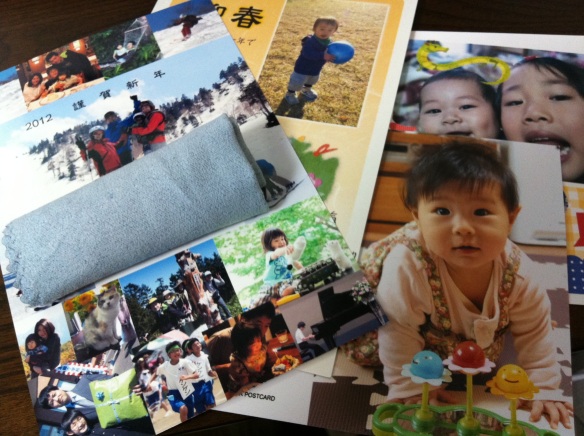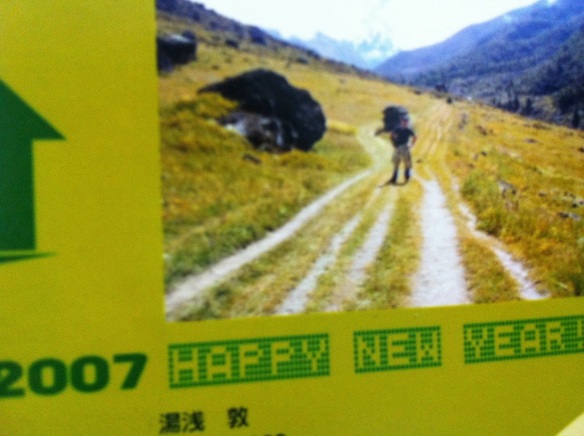It’s already the middle of January (how time flies!) and I still have a number of posts in line that is related to the Japanese New Year festivities or more known here as Shōgatsu (正月). The Japanese culture is just so rich with detail and flair!
So, the nengajō (年賀状). At a time when a lot of us are busy darting to and fro looking for the perfect gifts and cards for Christmas, the Japanese are busy as well with the preparations in sending the nengajō or the Japanese post cards which will be sent on January 1 granting you didn’t miss the deadline. So one can just imagine how busy the Japan Post is at this time of the year. It was amazing to see Japan Post employees standing at the side of the road with bags in hand so that motorists can drop their nengajō on the bag without parking or stopping over at the post office. Talk about efficient.
Some people, probably those who are in the arts and crafts, make their own nengajō. For the likes of me though, thankfully, stationers sell preprinted cards. Even convenience stores sell nengajō!
At Family Mart.


People are selling preprinted cards everywhere in that one can even order for the cards in front of a train station.
At JR Sakuragicho station.

We had ours ordered online though and had it personalised by おたより 本舗 (email them at ot@arts-net.co.jp).
Decided it best to have one of our wedding photos on our nengajō this year since the wedding was a great milestone for us for the year.

So yes, aside from well wishes for the new year, the nengajō is also a venue for people to share their milestones for the year by sharing photos. Hence it’s usual to see wedding photos, photos of their kids and babies, and photos of the sender from one of his/her travels.
Aren’t these kids just cute??!

People also take advantage of the nengajō to update their friends for any change of address or phone number.
If there has been a death or mourning in the family though, people send the mochuo (喪中), a card informing their friends to not send them the nengajō as respect to the grieving family/friend of the departed. We got three mochuo last December; the mochuo is usually sent weeks ahead of the nengajō.

Aside from the messages, photos and address/phone numbers, the nengajō is also sometimes decorated with famous cartoon characters alongside with the Chinese zodiac for the year. As this year is the year of the dragon, we got nengajō with cute dragon drawings.

For those which had the front of their nengajō full with photos, like ours, the stamp has some dragon drawing in it.

This was Atsushi’s stamp back in 2007 during the year of the pig.

And this was his front photo back then, a photo of him taken at Langtang Valley in the Himalaya.

The stamps aren’t just there for design though as they really serve as postal stamps. After writing down personal messages and written down the addresses of the recipients, one can immediately drop it at any postal box without paying anything since the stamp cost is already included in the price of the nengajō. It stands to reason though that only those accredited by the post office can sell nengajō.
Pretty interesting isn’t it? 🙂

















